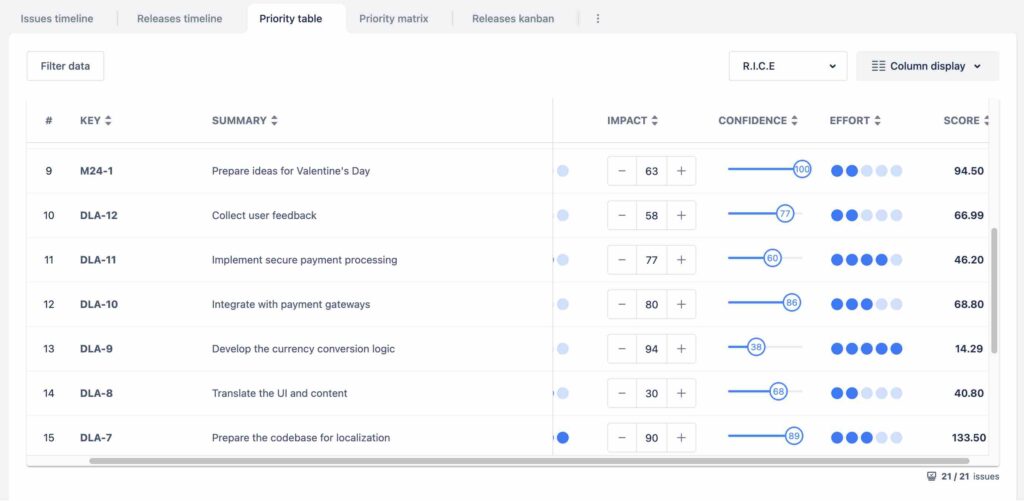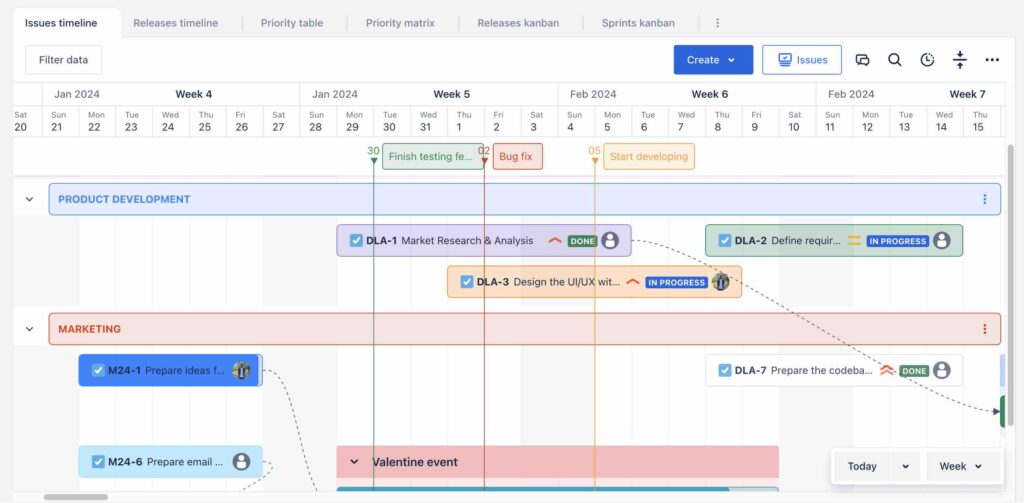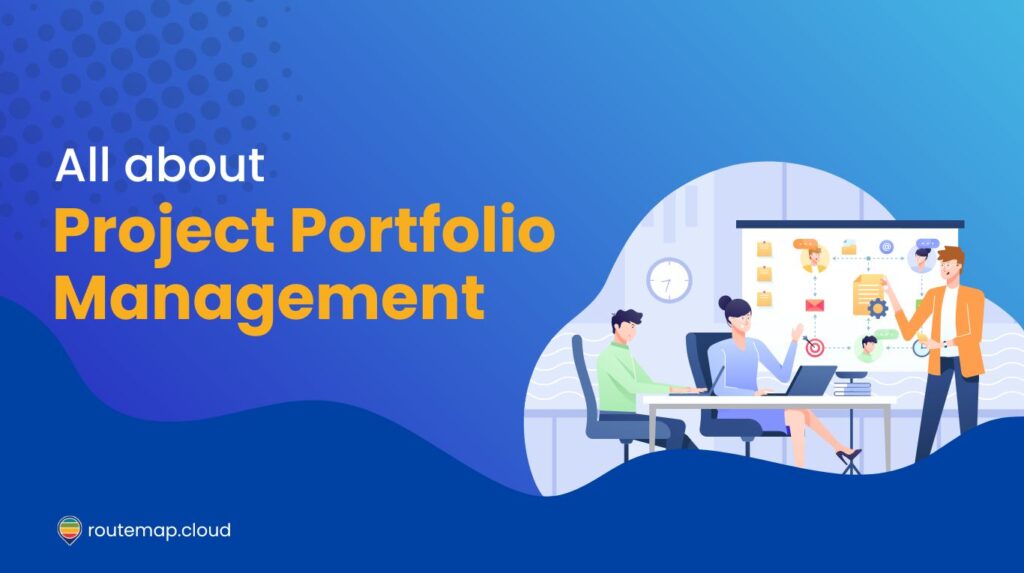As business grows, organizations often have to deal with multiple projects simultaneously, each competing for limited resources, attention, and time. This complexity makes it essential to have a strategic approach to managing these projects to ensure they contribute effectively to the company’s overarching goals. That’s when Project Portfolio Management comes in.
It is the key to achieving this alignment, providing a structured method for prioritizing, managing, and optimizing projects within a portfolio. By leveraging PPM, organizations can enhance project outcomes and ensure their efforts are directly tied to strategic objectives.
In this article, we’ll explore the fundamentals of PPM, its benefits, and the best tools you can get, equipping you with the knowledge to implement PPM effectively within your organization.
What is project portfolio management?
Project Portfolio Management (or PPM in short) is a strategic approach to managing a group of projects and programs within an organization. Additionally, it ensures those projects align with the company’s overall objectives and deliver maximum value.
Unlike traditional project management, which focuses on the successful execution of individual projects, PPM looks at the broader picture, considering the collective impact and strategic alignment of all projects within the portfolio.
You might also interested in: What is Portfolio Management?
Why is project portfolio management important to your business?
In a nutshell, PPM transforms project management from a tactical activity into a strategic discipline, ensuring that every project undertaken contributes meaningfully to the organization’s success. Additionally, it helps organizations navigate the complexities of managing multiple projects, optimize resource use, manage risks, and achieve their strategic objectives more effectively.
Which industries can benefit from PPM?
Project Portfolio Management (PPM) is beneficial across a wide range of industries, especially those that manage multiple projects simultaneously and need to align these projects with strategic business goals. Here are some industries that can particularly benefit from PPM.
1. IT and software development
In the IT sector, companies often manage numerous projects involving software development, system upgrades, and technology integrations. PPM helps prioritize these projects based on strategic importance, resource availability, and potential ROI, ensuring that critical projects receive the attention they need.
2. Financial services
Banks, insurance companies, and investment firms regularly undertake projects related to regulatory compliance, product development, and digital transformation. PPM helps these organizations manage their project portfolios to optimize resource allocation, minimize risks, and align initiatives with regulatory requirements and business goals.
3. Healthcare
In healthcare, managing clinical trials, regulatory compliance projects, and new technology implementations can be highly complex. PPM helps prioritize and manage these projects effectively, ensuring that resources are directed toward initiatives that improve patient care and align with the organization’s strategic objectives.
4. Manufacturing
Manufacturers often handle multiple projects, such as product development, process improvements, and supply chain optimization. Therefore, PPM aids in balancing these projects, ensuring that they are aligned with market demands and organizational strategy, ultimately enhancing operational efficiency and product innovation.
5. Construction and engineering
Construction and engineering firms manage complex projects with significant budgets, tight timelines, and multiple stakeholders. PPM helps these firms manage risks, optimize resource use, and ensure that all projects contribute to the company’s strategic growth and profitability.
6. Telecommunications
The telecommunications industry involves managing projects like network expansion, technology upgrades, and service rollouts. PPM helps prioritize these projects to ensure the optimal use of resources and alignment with long-term business objectives, such as improving service quality and expanding market reach.
Advantages of implementing project portfolio management
1. Align company objectives with project goals
One of the primary benefits of project portfolio management is ensuring that all projects within an organization are strategically aligned with its overarching goals. PPM enables decision-makers to assess each project’s potential impact on business objectives, ensuring that resources are directed toward initiatives that advance the organization’s strategy.
Besides, this alignment prevents pursuing projects that may seem promising in isolation but do not contribute to the broader business aims. By consistently prioritizing projects that align with strategic goals, PPM helps organizations maintain focus on long-term success rather than being sidetracked by short-term or low-value initiatives.
2. Allow making better decisions
PPM enhances decision-making by providing a structured framework that incorporates data-driven insights and real-time analytics. Through PPM, organizations gain a comprehensive view of all ongoing and potential projects, allowing for more informed decisions about project initiation, continuation, or termination.
This perspective helps leaders identify which projects offer the highest potential returns and align best with strategic objectives. As a result, leaders can avoid the common pitfall of investing in projects that do not deliver significant value.
Moreover, PPM facilitates scenario planning and impact analysis, empowering organizations to anticipate the consequences of project-related decisions and make adjustments proactively.
3. Optimize resource use
Effective resource allocation is another significant benefit of PPM. By centralizing the management of projects, PPM provides a clear overview of resource needs and availability across the entire portfolio.
This helps organizations allocate resources – such as personnel, budget, and equipment – more efficiently. Besides, it can also reduces waste and avoids the overcommitment of resources to lower-priority projects.
PPM also aids in identifying resource bottlenecks and optimizing workloads, ensuring that high-priority projects receive the necessary support while maintaining balanced resource distribution across the portfolio. Therefore, this optimized use of resources leads to improved project outcomes and enhances the overall efficiency of the organization.
4. Help prioritize projects
Organizations can also use PPM as a way to prioritize projects effectively. In an environment where resources are limited and multiple projects are vying for attention, PPM provides a structured approach to evaluate and rank projects based on their strategic value, potential ROI, risk, and resource requirements.

Additionally, this prioritization ensures that the most critical and beneficial projects receive the necessary resources and support, while lower-priority projects are either deferred or scaled back. As a result, PPM helps organizations focus their efforts on initiatives that align closely with their strategic goals, thereby enhancing overall efficiency and effectiveness.
5. Focus more on the big picture
PPM encourages organizations to take a complete overview of their projects, focusing on the big picture rather than getting bogged down in the details of individual projects. This broad perspective is essential for ensuring that all projects within the portfolio are aligned with the organization’s long-term strategy and that resources are being utilized most effectively.
By looking at the entire portfolio, PPM helps organizations balance short-term needs with long-term objectives, avoid duplicative efforts, and make decisions that support overall business priorities. This big-picture focus ensures that projects are not managed in isolation but are considered as part of a broader strategic context, enhancing the organization’s ability to achieve its overarching goals.
6. Enhance risk management
PPM offers a comprehensive approach to risk management by providing visibility into potential risks across the entire portfolio. This allows organizations to identify, assess, and prioritize risks not just at the individual project level but also in terms of their cumulative impact on the portfolio.
By taking a portfolio-wide view of risks, organizations can develop strategies to mitigate them more effectively, balancing high-risk, high-reward projects with safer, more predictable initiatives. This strategic risk management approach reduces the likelihood of project failures and helps safeguard the overall health of the portfolio, ensuring a more resilient project environment
7. Increase ROI
Last but not least, PPM aims to maximize the return on investment (ROI) by ensuring that the organization’s resources are focused on the most valuable projects. It helps organizations concentrate on initiatives that promise the greatest returns by systematically prioritizing projects based on their expected benefits, costs, and alignment with strategic goals.

Moreover, this focus on high-value projects reduces the opportunity costs associated with pursuing less beneficial endeavors and enhances the overall financial performance of the project portfolio. As a result, organizations using PPM can achieve greater efficiency, effectiveness, and profitability, reinforcing the importance of PPM as a strategic tool for driving business success.
Best tools for project portfolio management
When it comes to PPM, selecting the right tools can enhance an organization’s ability to plan, track, and manage multiple projects effectively. Fortunately, we’ve already had some top picks in mind for whom is either working with Atlassian or monday.com.
Let’s take a look.
1. PPM tools for Atlassian
We all know how powerful Atlassian is when it comes to managing agile projects or product development. And it is not surprising to see organizations trying to find an optimal way to manage their project portfolio. In that case, why not take a closer look at Routemap by DevSamurai?
Routemap is a powerful PPM tool designed specifically for Atlassian’s suite, integrating directly with Jira to offer advanced portfolio planning, roadmapping, and alignment capabilities. Additionally, it provides teams with a clear view of project timelines, dependencies, and strategic alignment.

As a result, the app allows for better resource management and prioritization of key initiatives within the Atlassian ecosystem. Besides, Routemap helps organizations maintain a strategic focus, ensuring all projects contribute effectively to business objectives.
2. Tools for monday.com
Next, we have PPM for monday.com. And as you can guess from its name, this tool is designed to transform monday.com into a powerful PPM solution by offering customizable dashboards, real-time project tracking, and resource management.
It enables teams to visualize their entire project portfolio, prioritize initiatives based on strategic goals, and optimize resource allocation—all within Monday.com’s highly visual and user-friendly platform.
Final thoughts
Project Portfolio Management is a strategic approach that provides organizations with the tools and processes needed to manage multiple projects effectively. By aligning projects with strategic objectives, improving resource allocation, and enhancing decision-making, PPM offers significant benefits.
However, it also presents challenges that must be addressed through best practices, such as establishing clear objectives, leveraging technology, and fostering collaboration. As PPM continues to evolve, trends like AI integration and agile methodologies will further shape its future, making it an essential discipline for achieving long-term business success.
Organizations looking to optimize their project management strategies should consider implementing or enhancing their PPM practices to gain a strategic advantage.
Related articles:




